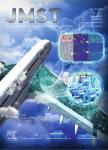Influence of Four Factors on Discharge Capacity and Self-Discharge Rate of Iron Electrode
Influence of Four Factors on Discharge Capacity and Self-Discharge Rate of Iron Electrode作者机构:Inst. of New Energy Mat. Chem. Nankai Univ. Tianjin 300071 China
出 版 物:《Journal of Materials Science & Technology》 (材料科学技术(英文版))
年 卷 期:2003年第19卷第6期
页 面:515-517页
核心收录:
基 金:This work was supported by the National Natural Science Foundation of China under grant No.50002005 Natural Sci ence Foundation of Tianjin under grant No.013606811,which were presided by Shihai YE
主 题:Iron electrode Discharge capacity Self-discharge rate Ni-Fe battery
摘 要:Ni-Fe rechargeable batteries possess the advantages of long cycle life, high theoretical specific energy, abundant raw material, low price and environmental friendship. It has a wide applied perspective. The advantages, disadvantages and preparation methods of iron electrodes were summarized. The influence of four factors on discharge capacity and self-discharge rate of iron electrode were discussed by means of orthogonal experiments, galvanostatic charges and discharges. The influences of graphite on the discharge capacity and self-discharge rate of iron electrode were the most remarkable, the most unapparent influences on the discharge capacity and self-discharge rate were HPMC (hydroxy propoxy methoxy cellulose) and sodium sulphide, respectively. The aim of the present research was to study the effects of graphite, HPMC and iron powder added in the electrodes, sodium sulphide added in the electrolytes on the discharge capacity and self-discharge rate of iron electrodes. The largest discharge capacity of the iron electrodes was 488.5 mAh/g-Fe at 66.4 mA/g-Fe in the first ten cycles, and the average self-discharge rate was 0.367% per hour.



